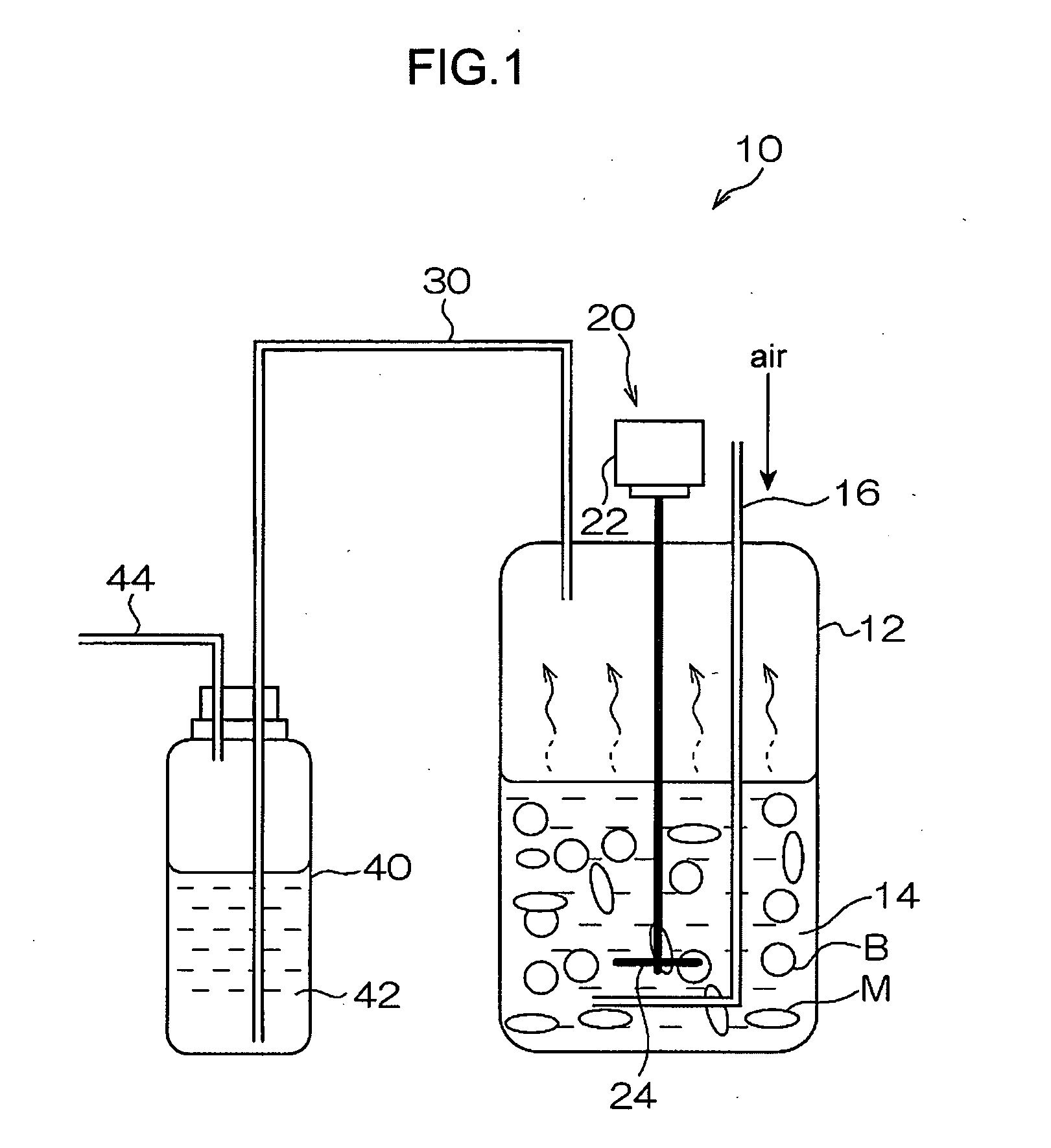Isopropyl alcohol- producing bacterium and method of producing isopropyl alcohol using the same
a technology of isopropyl alcohol and isopropyl alcohol, which is applied in the direction of biomass after-treatment, lyase, transferase, etc., can solve the problems difficult to separate isopropyl alcohol from butanol and/or ethanol by simple distillation, and high cost, so as to achieve the effect of low isopropyl alcohol productivity
- Summary
- Abstract
- Description
- Claims
- Application Information
AI Technical Summary
Benefits of technology
Problems solved by technology
Method used
Image
Examples
example 1
Construction of Vector for Expression of Isopropyl Alcohol-producing Enzyme Genes Derived from Bacterium of Genus Clostridium and Transformant with the Expression Vector
[0113]Amino acid sequences and base sequences of the genes of the four kinds of isopropyl alcohol-producing enzymes in bacteria of the genus Clostridium have been already reported. That is, thiolase is described in 3005963-3007364 of the complementary strand of the genome sequence described in GenBank accession number AE001437. CoA transferase is described in GenBank accession number X72831, acetoacetate decarboxylase is described in GenBank accession number M55392, and isopropyl alcohol dehydrogenase is described in GenBank accession number AF157307. The sequence of the thiolase promoter existing in the above base sequence of thiolase may be used as the sequence of a promoter required for expression of these four kinds of genes.
[0114]To obtain the thiolase promoter and the thiolase gene, amplification by PCR was car...
example 2
Production of Isopropyl Alcohol by Escherichia Coli Strain pIPA / B and Escherichia Coli Wild-Type Strain
[0123]As preculturing, 5 mL of LB Broth Miller culture medium containing 0.1 g / L of ampicillin and 2 g / L of glucose was placed in a plastic tube having a capacity of 14 mL (trade name: 2057, manufactured by FALCON), and the Escherichia coli strain pIPA / B obtained in Example 1 was inoculated thereto, followed by culturing overnight at a culturing temperature of 37° C. with shaking at 120 rpm. The Escherichia coli B wild-type strain was cultured with shaking in a medium having the same formulation except that it did not contain ampicillin, under the same culturing condition. The total amount of each of the preculture media was transferred to an Erlenmeyer flask having a capacity of 300 mL and containing 60 mL of LB Broth Miller culture medium with 0.1 g / L of ampicillin and 20 g / L of glucose, to carry out culture. The culturing was carried out at a stirring rate of 120 rpm and a cultu...
example 3
Production of Isopropyl Alcohol by Escherichia Coli Strain pIPA / B Using 1 L-Culture Vessel (1)
[0124]The processing in this Example was carried out using the production apparatus 10 shown in FIG. 1. The culture vessel 12 had a capacity of 1 L, and the trap vessel had a capacity of 500 mL. All of the culture vessel 12, trap vessel 40, injection duct 16, connecting duct 30 and exhaust duct 44 were made of glass. 400 mL of water (trap water) as the trap liquid 42 was injected in the trap vessel 40.
[0125]As preculturing, 4 mL of LB Broth Miller culture medium containing 0.1 g / L of ampicillin and 2 g / L of glucose was placed in a test tube, and the Escherichia coli strain pIPA / B obtained in Example 1 was inoculated thereto, followed by culturing for 18 hours at a culturing temperature of 37° C. with shaking at 120 rpm. The entire of the preculture medium was inoculated to a 1 L-culture vessel containing 500 mL of LB Broth Miller culture medium containing 0.1 g / L of ampicillin, 20 g / L of gl...
PUM
| Property | Measurement | Unit |
|---|---|---|
| Fraction | aaaaa | aaaaa |
| Fraction | aaaaa | aaaaa |
Abstract
Description
Claims
Application Information
 Login to View More
Login to View More - R&D
- Intellectual Property
- Life Sciences
- Materials
- Tech Scout
- Unparalleled Data Quality
- Higher Quality Content
- 60% Fewer Hallucinations
Browse by: Latest US Patents, China's latest patents, Technical Efficacy Thesaurus, Application Domain, Technology Topic, Popular Technical Reports.
© 2025 PatSnap. All rights reserved.Legal|Privacy policy|Modern Slavery Act Transparency Statement|Sitemap|About US| Contact US: help@patsnap.com

